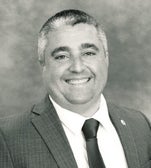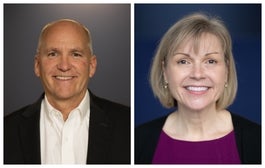Area Banks Fan Out To Generate Business
Commercial lending boundaries are beginning to crumble for several Central Massachusetts banks that are launching a virtual free-for-all to generate business that can cover a drop in residential real estate lending.
Many of these institutions have moved in recent years to bolster their commercial lending portfolios as the residential real estate and refinance markets have slowed. That has taken many lenders out of the region and, for some, out of the state.
“When you’ve got modest loan demand and low rates, you’ve got to generate income to pay the bills,” said David Floreen, senior vice president of the Massachusetts Bankers Association.
Natick-based Middlesex Savings Bank was one of the first local banks to expand its commercial lending territory beyond its physical branch footprint. The bank has 32 branches stretching along Interstate 495 from Groton to Franklin, but decided a decade ago that it would provide medium and large commercial loans to businesses throughout Massachusetts, Rhode Island and New Hampshire with more than $2 million in annual sales, said David Falwell, the bank’s chief lending officer.
The decision to lend outside its primary service area has helped Middlesex grow its loan-to-asset ratio from low to respectable, Falwell said.
“Whether the company’s in Brockton or in Lowell, the same process still applies,” he said.
Other banks have followed in Middlesex’s footsteps, fueled by market dynamics and improving technology, plus the fact they don’t have broader access to capital since they don’t sell stock.
The increasing ubiquity of “remote capture” — which allows a borrower to deposit a check without visiting a physical branch — has made out-of-market lending much more practical, said Devon Kinnard, an attorney with DarrowEverret, a business law firm with an office in Worcester.
Central Massachusetts also serves as home to 26 different banks, making it tough for any one lender to dominate the area, giving each a piece of the action.
“Worcester has more banks in the region than it can stomach,” Kinnard said.
Coming Out Of Recession
Yet the region’s banks — due in part to their smaller size — weathered the Great Recession rather well.
The banks’ average core capital ratio — a metric that measures the extent to which banks can cover losses if loans go bad (core capital divided by assets) — is 10.31 percent, well above the state average of 7.6 percent and the national mean of 9.34 percent.
A crowded market and strong financial position makes Central Massachusetts banks more borrower-friendly, Kinnard said.
“There’s a fair amount of competition in this market for someone that wants to comes in and get a good deal,” he said.
The vast majority of Central Massachusetts banks aren’t publicly traded, so they’re unable to raise money by selling stock. For mutual banks like Clinton Savings Bank, that means the only way to gain capital is to increase earnings, said Len Anctil, the bank’s senior commercial lending officer.
Clinton Savings expects to underwrite $21.6 million in loans within Worcester County and $20.9 million outside the county by the end of the year, Anctil said.
Most of the non-local lending has been to the east for such items as real estate investments, apartment buildings, retail and printing businesses, Anctil said. All those loans have been based off referrals from existing customers, accountants or chamber of commerce members.
“We don’t aggressively, actively and directly market outside of the county,” he said.
A desire to add value for shareholders can also prompt banks to pursue non-local loans. Worcester-based Commerce Bank wants to increase its deposit-side presence and boost its asset pool from $1.8 billion to $2 billion, said Robert Barnhard, the bank’s director of commercial lending.
Growth Over Stagnation
“If you’re not growing, you’re to a certain degree stagnating, which we don’t want to do,” said Barnhard, noting that roughly 40 percent of Commerce’s commercial loan business goes outside Worcester County.
Fidelity Bank has been slightly less aggressive in pursuing out-of-market customers. A little more than a quarter — or roughly $56 million — of its commercial loans are to non-local firms, bank president John Merrill said.
The Leominster-based bank focuses much of its non-local lending on Dunkin Donuts franchises and solar arrays for commercial customers, Merrill said, where the bank has developed industry-specific expertise.
UniBank, meanwhile, has been one of the more reluctant institutions to go after non-local customers. Just 20 percent — or roughly $50 million — of its real estate loans and less than 10 percent ($15 million) of its commercial loans are consummated with firms located more than 30 miles from the bank’s Whitinsville headquarters, said Deborah Larsen, the bank’s senior lending officer.
And even most of those loans go to people living in Rhode Island or along the 495 corridor, Larsen said.
“Is it cost effective for them (lending officers) to go on a call and drive 50 miles there and 50 miles back?” she asked rhetorically.
Strategies For More Sales
Other banks have deployed various strategies to address that question.
Commerce, for example, directs its lending officers who visit distant locales to fit in as many appointments as possible over a two-day period, Barnhard said, while Middlesex officials might make arrangements to visit several companies in a particular area at the same time, Falwell said.
Clinton Savings instructs its lending officers to visit non-local sites first thing in the morning or last thing in the day, Anctil said, so that part of the commute take places outside normal business hours. That way, Anctil said, officers can be kept as free as possible during the day.
“At some point, we’ll reach the level where we think we have enough outside this county,” Anctil said.













0 Comments